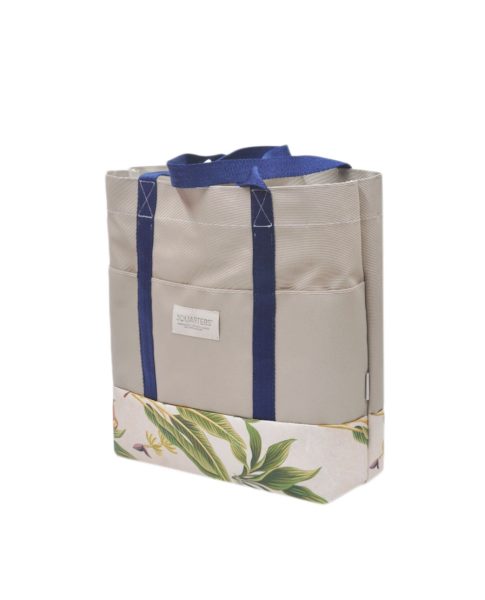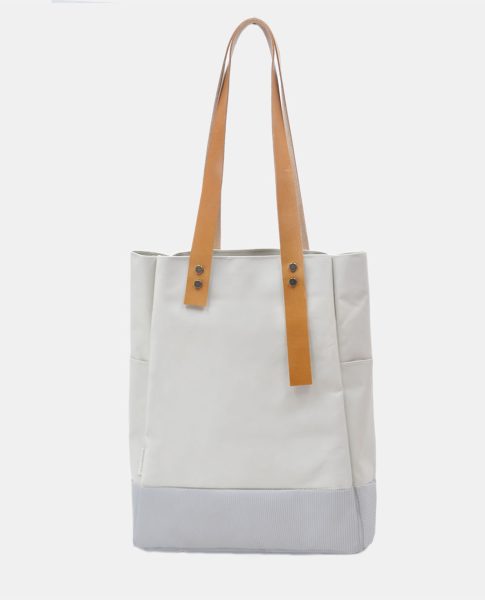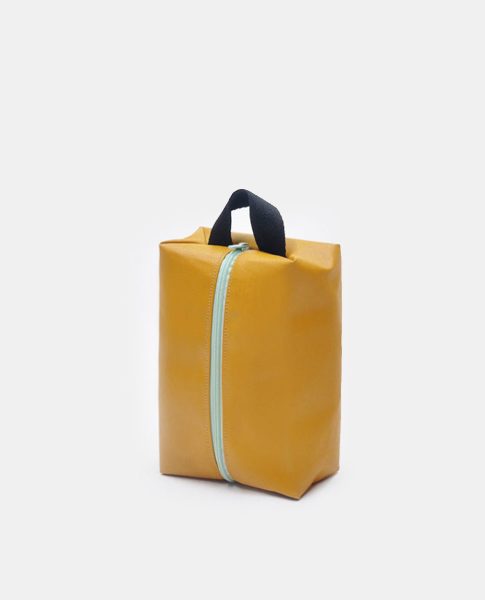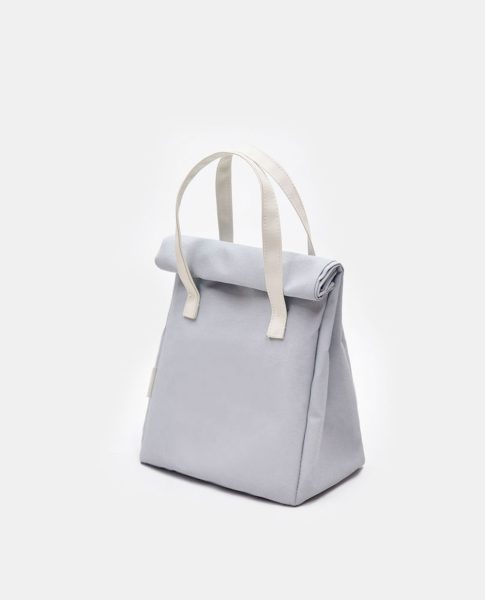Materials
Sustainable Materials and Tough Choices
Our main materials
Balcony Awnings
Awnings are the waterproof fabrics protecting balconies and shopfronts. They are ubiquitous in Athens, it's part of the culture. They are high-grade textiles, originally produced to last decades. Sourced directly from awning installers’ surplus stock, they are unused and pristine – rescued before becoming waste. Rugged, weather-resistant, and designed to last, they now find new purpose in bold, functional designs.
Event Banners
We source banners that once announced exhibitions, festivals, or films. These event banner fabrics bear faint marks of their past life—a subtle testament to reuse. Thick, colourfast, and designed for outdoor endurance, they are now re-cut for structure and style, with each piece subtly unique. Extra large scale banners are perforated (called mesh) and are partially see-through, a very useful feature.
Life Rafts
Ferry boat life rafts from the port of Piraeus. Once part of emergency ferry equipment, these life raft fabrics are engineered to withstand harsh marine conditions. Decommissioned after strict safety timelines—not from use—they are meticulously cleaned and transformed. Exceptionally waterproof and tear-resistant, they carries stories of protection into everyday carry.
What about the rest
Our threads are 100% cotton, Greek spun and made. We’re looking into recycled synthetic threads also.
Our zips are YKK, the best quality possible, and made from 100% recycled plastic bottles (rPET).
Our buckles & rivets are made out of 100% recycled Nylon or the best metal alternatives in the market. All are sourced from within the EU.
We use straps on most of our products and they are made out of Econyl® 100% recycled PET. It doesn’t get much better than this. Some have straps from balcony shutters. They are cotton-based with some polyester. Collecting used straps was our number one priority but it is proving to be very difficult.
We use leather for some straps. It is locally sourced and the least processed one possible – vegetable tanned and no chemical dying at all. Leather has some amazing properties that are difficult to replicate. Its strength, longevity, and reliability are second to none. We design leather-free first and testing alternatives.
Our packaging is plastic-free and exclusively made out of 100% recycled paper.
Our target
We already have a network of local tradespeople we work with. We actively collaborate with museums, advertising companies and large organisations to repurpose their banners. And we have started collecting decommissioned life-rafts. Gathering leftover fabrics is not as easy as it sounds but our network is growing. With recognition comes access.
Our target is to collect everything and make sure no more synthetic fabrics go to a landfill. But beyond that, we are working towards a future where no waste materials at all are thrown away just. A circular economy is our dream and we’re doing our very best to achieve it!



